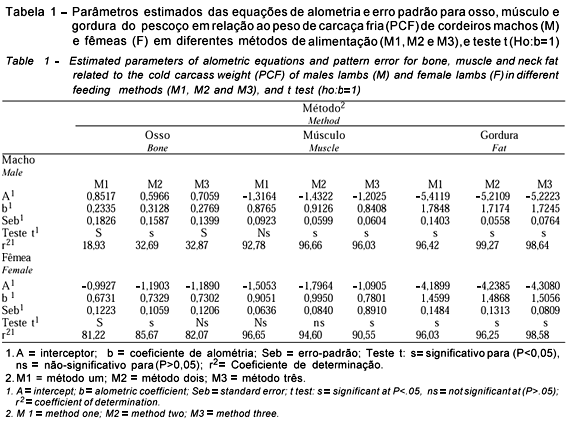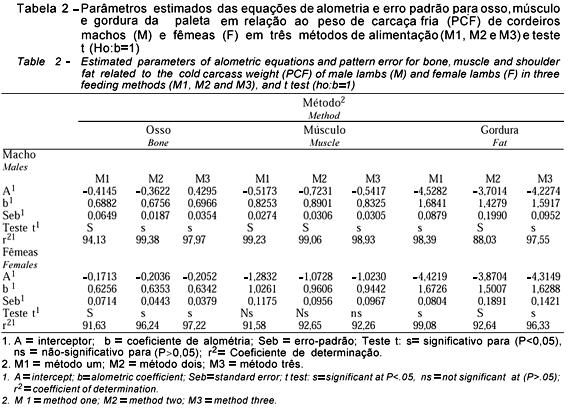The experiment was done at the Universidade Federal de Santa Maria Animal Science Department Ovinoculture Sector, it had the was carried out to study the relative bone growth, muscle and adiposity of the neck, shoulder-blade, rib and leg of carcass of the lambs. It was used 45 lambs (Texel), 22 non-castrated male and 23 females. From that group, seven were slaughtered in the beginning of the experiment and the other ones when they reached 25 or 33 kg. Sheep and lambs were allotted to three feeding methods, M1- Corn silage and concentrated only to the lambs, up to the weaning, at 60 days, M2- Corn silage and concentrated only to the lambs up to the weaning, at 45 days and M3- corn silage and concentrated to sheeps and lambs up to the weaning with 60 days. The lambs were randomly distributed into collective boxes and submitted to three feeding methods. It was used a randomly delineation with a factorial arrangement of 3:2:2 (3 methods, 2 sexes and 2 weights of slaughter). The growth determination was obtained through the equation log y=loga + blogx, using the logarithm of the bone muscle and fat weight based on the logarithm of the cold carcass weight. The allometric coefficients to the neck bone, to males, varied of 0.23 to 0.31 and to females, the variation was from 0.67 to 0.73, whereas the muscle growth, excepting the feeding methods, was isometric concerning carcass, and the fat coefficients was superior in relation to unity, regardless feeding methods and sex. Concerning the shoulder-blade bone the allometric coefficients varied to 0.64 from 0.82 and the muscle growth, in the three feeding methods, was anticipated only to males, whereas to females was isometric and fat, regardless sex and feeding methods and presented late growth, with coefficients varying from 1.42 to 1.68. In the leg bone, regardless sex and feeding methods, the bone presented premature growth with allometric coefficients varying to 0.56 from 0.77, but to muscle the coefficients do not differ from unity, whereas to fat the coefficients ranged from 1.67 to 1.96.
allometric coefficients; fat; muscle; bone; ovine




